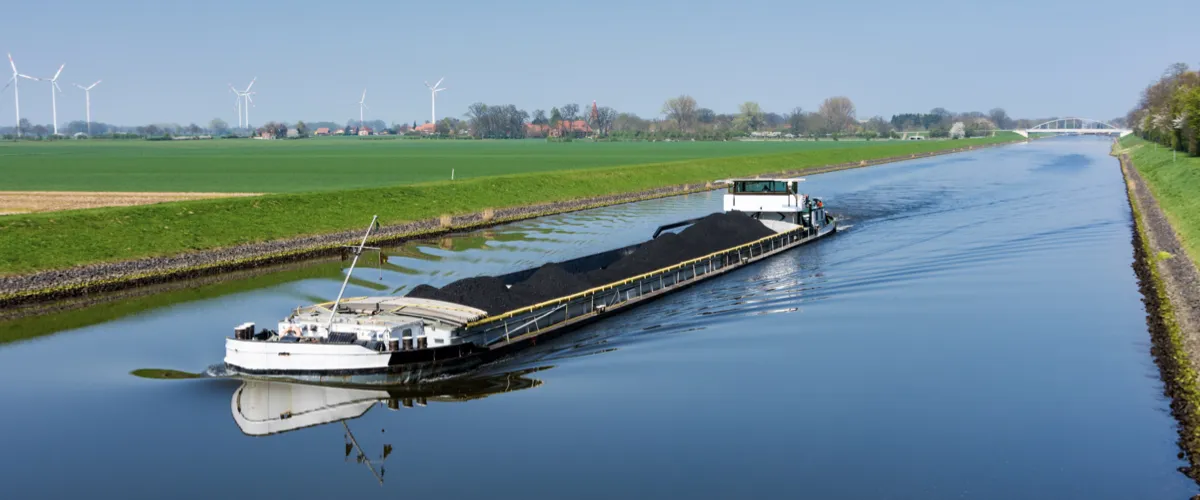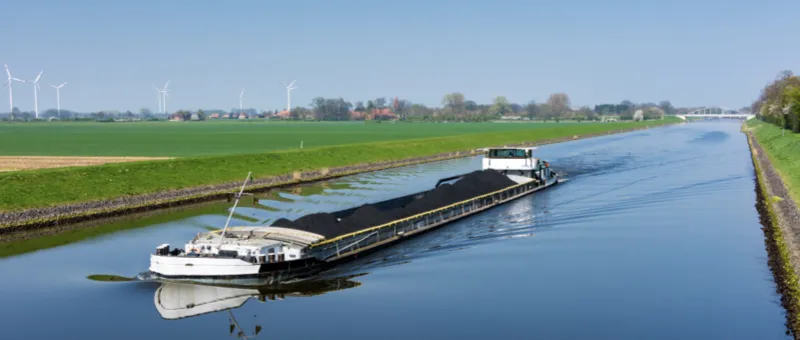European Emission Label: Successor to the Inland Shipping Emission Performance Label
Author: Jeroen Berger • Publication date:
Demand for transparent emission reporting across the logistics chain is rapidly growing. New European legislation—such as the Corporate Sustainability Reporting Directive (CSRD), the Corporate Sustainability Due Diligence Directive (CSDDD), and ISO 14083:2023—now requires inland waterway operators to make their environmental performance demonstrable and traceable. In this context, attention is shifting from the Dutch Inland Shipping Emission Performance Label to a harmonized European emission label. This new classification standard is expected to become the uniform benchmark for emission performance within the European inland shipping sector.
This development is particularly relevant for shipping companies, shipowners, and technical managers active in inland navigation who seek to strengthen their position in an increasingly sustainability-driven market.
From National Initiative to European Standard
Since 2021, the Netherlands had offered its own methodology for classifying emissions in inland shipping through the Inland Shipping Emission Performance Label. The label linked a letter to greenhouse gas emissions such as carbon dioxide (CO2), which contribute to climate change, and a number to emissions of air pollutants such as nitrogen oxides (NOx) and particulate matter (PM), which affect air quality and public health.
Despite the label’s strong technical foundation and policy support, broad adoption in practice never materialized. Legally, it was not feasible to make the label mandatory at the national level. And given the inherently cross-border nature of inland shipping, European harmonization proved essential. As a result, the Dutch performance label has now been phased out, and focus is shifting toward a widely supported, pan-European emission certification.
PLATINA4Action: Roadmap Toward a European Emission Certificate
Under the European PLATINA4Action project, work is underway to develop a harmonized methodology for measuring, recording, and classifying emissions in inland shipping. Experiences from the Dutch label are playing a key role in this process. The objective is a practical, validated, and internationally recognized environmental performance label—deployable throughout the entire logistics chain: from shipowners and shippers to port authorities, banks, and governments. With one unified method, comparing emission data, substantiating sustainability claims, and remaining competitive in a rapidly decarbonizing market becomes easier.
The harmonized methodology is currently being developed as a guideline. Implementation of the European emission label is expected to begin in 2027, depending on the further development of European regulations and national legislation.
Less Reporting Burden, More Usable Data
A major benefit of the new European emission certificate is the standardized way in which emissions data are recorded and verified. This prevents duplicated reporting to multiple stakeholders and significantly reduces the administrative burden for businesses. Inland shipping operators can now meet CSRD, CSDDD, and ISO 14083 requirements using a single validated dataset.
Furthermore, ISO 14083 requires a broader approach to emission sources: auxiliary processes such as bridge operations, locks, loading, and unloading must also be included in total emissions calculations. The new environmental performance label provides a streamlined framework to report these emissions transparently and reproducibly.
Access to Financing and Subsidies
The new system serves not only as an emission label but also as a gateway to financing. More and more governments, funds, and banks are linking their support to measurable sustainability performance. Think of the DUMAVA scheme for sustainable inland shipping, the CEF Transport Call from the European Commission, the Innovation and Climate Fund, or green loans from commercial banks. Entrepreneurs who can demonstrate their performance with a recognized European emission certificate increase their access to capital, reduce financing risk, and improve their market position.
Driving Zero-Emission Innovation
The European environmental performance label acts as a powerful driver of technological innovation in inland shipping. Operators seeking to improve their emission class are encouraged to invest in advanced clean technologies, such as Stage V main engines, SCR catalysts and diesel particulate filters (DPFs), alternative fuels like hydrogen or HVO, and hybrid or fully electric propulsion systems.
These investments not only deliver immediate emission reductions but also lead to higher classification scores within the European certification system—resulting in more financial benefits, better access to subsidies, and a stronger position in procurement procedures. In this way, the label encourages concrete steps toward zero-emission inland shipping.
Emission Transparency as a Policy Instrument
According to Dutch research institute EICB, which conducted a study on the label on behalf of the Ministry of Infrastructure and Water Management (IenW), a harmonized approach not only provides insights into individual vessel performance but also at the fleet level. This enables systematic monitoring of decarbonization progress across the inland shipping sector.
The European Commission sees inland shipping as a key sector within both the Green Deal and the Smart and Sustainable Mobility Strategy. A harmonized European emission certificate aligns perfectly with these strategies and offers policymakers a practical, actionable tool for achieving CO2 reductions and improved air quality in the transport sector.



